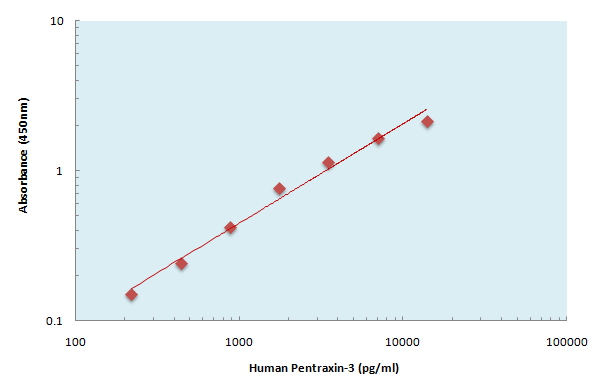Ptx3 Polyclonal Antibody
- Catalog No.:YT3905
- Applications:WB;IHC;IF;ELISA
- Reactivity:Human;Mouse
- Target:
- Ptx3
- Gene Name:
- PTX3
- Protein Name:
- Pentraxin-related protein PTX3
- Human Gene Id:
- 5806
- Human Swiss Prot No:
- P26022
- Mouse Gene Id:
- 19288
- Mouse Swiss Prot No:
- P48759
- Immunogen:
- The antiserum was produced against synthesized peptide derived from human PTX3. AA range:1-50
- Specificity:
- Ptx3 Polyclonal Antibody detects endogenous levels of Ptx3 protein.
- Formulation:
- Liquid in PBS containing 50% glycerol, 0.5% BSA and 0.02% sodium azide.
- Source:
- Polyclonal, Rabbit,IgG
- Dilution:
- WB 1:500 - 1:2000. IHC 1:100 - 1:300. IF 1:200 - 1:1000. ELISA: 1:10000. Not yet tested in other applications.
- Purification:
- The antibody was affinity-purified from rabbit antiserum by affinity-chromatography using epitope-specific immunogen.
- Concentration:
- 1 mg/ml
- Storage Stability:
- -15°C to -25°C/1 year(Do not lower than -25°C)
- Other Name:
- PTX3;TNFAIP5;TSG14;Pentraxin-related protein PTX3;Pentaxin-related protein PTX3;Tumor necrosis factor alpha-induced protein 5;TNF alpha-induced protein 5;Tumor necrosis factor-inducible gene 14 protein;TSG-14
- Observed Band(KD):
- 40kD
- Background:
- This gene encodes a member of the pentraxin protein family. The expression of this protein is induced by inflammatory cytokines in response to inflammatory stimuli in several mesenchymal and epithelial cell types, particularly endothelial cells and mononuclear phagocytes. The protein promotes fibrocyte differentiation and is involved in regulating inflammation and complement activation. It also plays a role in angiogenesis and tissue remodeling. The protein serves as a biomarker for several inflammatory conditions. [provided by RefSeq, Jun 2016],
- Function:
- function:Plays a role in the regulation of innate resistance to pathogens, inflammatory reactions, possibly clearance of self-components and female fertility.,induction:By interleukin-1 beta and TNF-alpha.,PTM:Glycosylated.,similarity:Contains 1 pentaxin domain.,subunit:Homooctamer; disulfide-linked. Binds to C1q.,
- Subcellular Location:
- Secreted.
- Expression:
- Brain,Endothelial cell,Foreskin,
Role of PTX3 in corneal epithelial innate immunity against Aspergillus fumigatus infection. EXPERIMENTAL EYE RESEARCH Exp Eye Res. 2018 Feb;167:152 ICC Human 1:400 HCECs
- June 19-2018
- WESTERN IMMUNOBLOTTING PROTOCOL
- June 19-2018
- IMMUNOHISTOCHEMISTRY-PARAFFIN PROTOCOL
- June 19-2018
- IMMUNOFLUORESCENCE PROTOCOL
- September 08-2020
- FLOW-CYTOMEYRT-PROTOCOL
- May 20-2022
- Cell-Based ELISA│解您多样本WB检测之困扰
- July 13-2018
- CELL-BASED-ELISA-PROTOCOL-FOR-ACETYL-PROTEIN
- July 13-2018
- CELL-BASED-ELISA-PROTOCOL-FOR-PHOSPHO-PROTEIN
- July 13-2018
- Antibody-FAQs
- Products Images
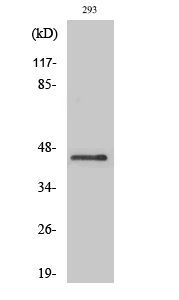
- Western Blot analysis of various cells using Ptx3 Polyclonal Antibody diluted at 1:1000
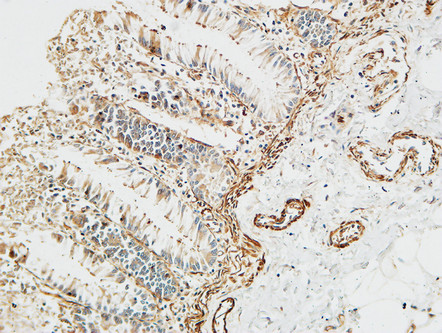
- Immunohistochemical analysis of paraffin-embedded Human colon. 1, Antibody was diluted at 1:100(4° overnight). 2, High-pressure and temperature EDTA, pH8.0 was used for antigen retrieval. 3,Secondary antibody was diluted at 1:200(room temperature, 30min).
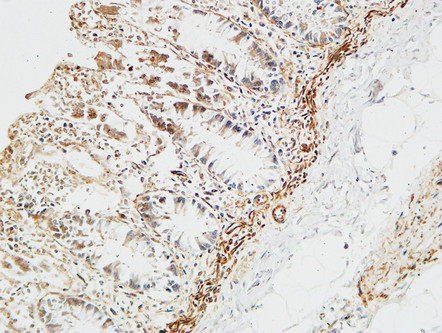
- Immunohistochemical analysis of paraffin-embedded Human colon. 1, Antibody was diluted at 1:100(4° overnight). 2, High-pressure and temperature EDTA, pH8.0 was used for antigen retrieval. 3,Secondary antibody was diluted at 1:200(room temperature, 30min).
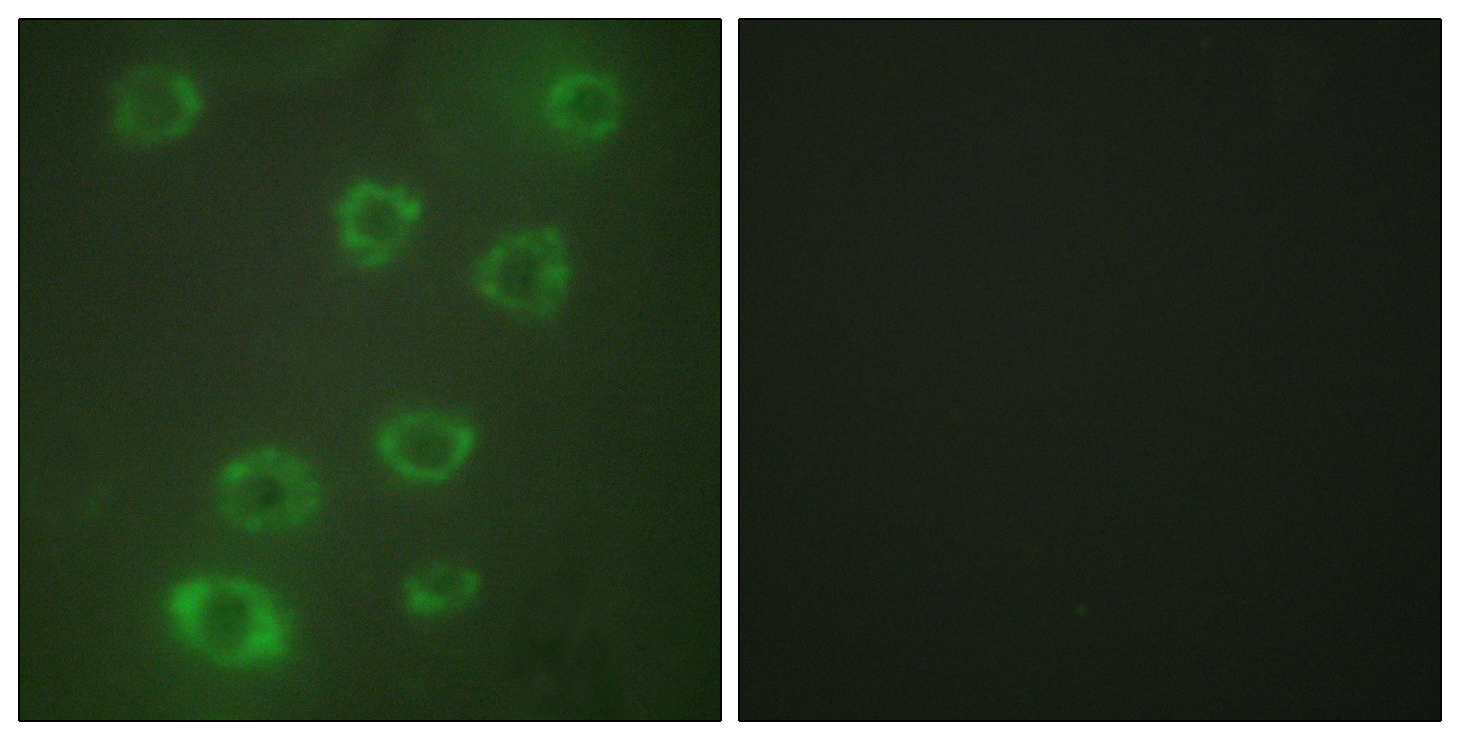
- Immunofluorescence analysis of HUVEC cells, using PTX3 Antibody. The picture on the right is blocked with the synthesized peptide.
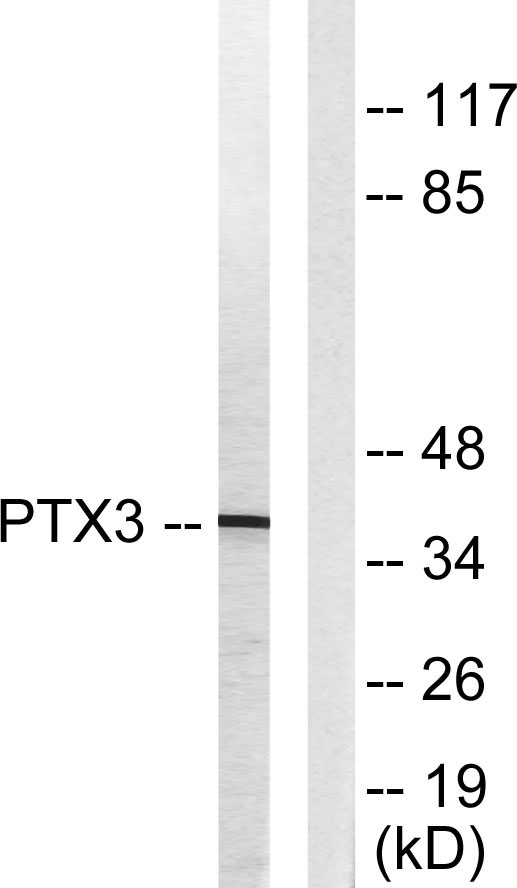
- Western blot analysis of lysates from 293 cells, using PTX3 Antibody. The lane on the right is blocked with the synthesized peptide.
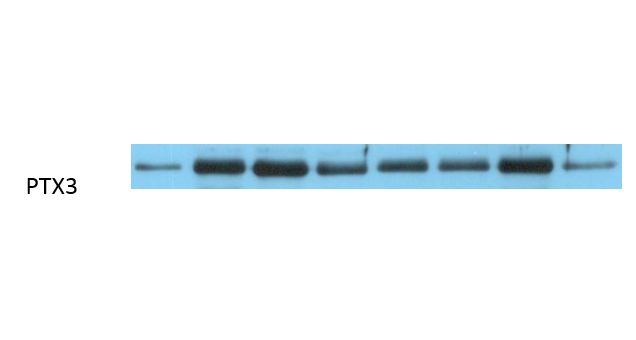
- The picture was kindly provided by our customer

- Western Blot analysis of various cells. The picture was provided by our customer.

